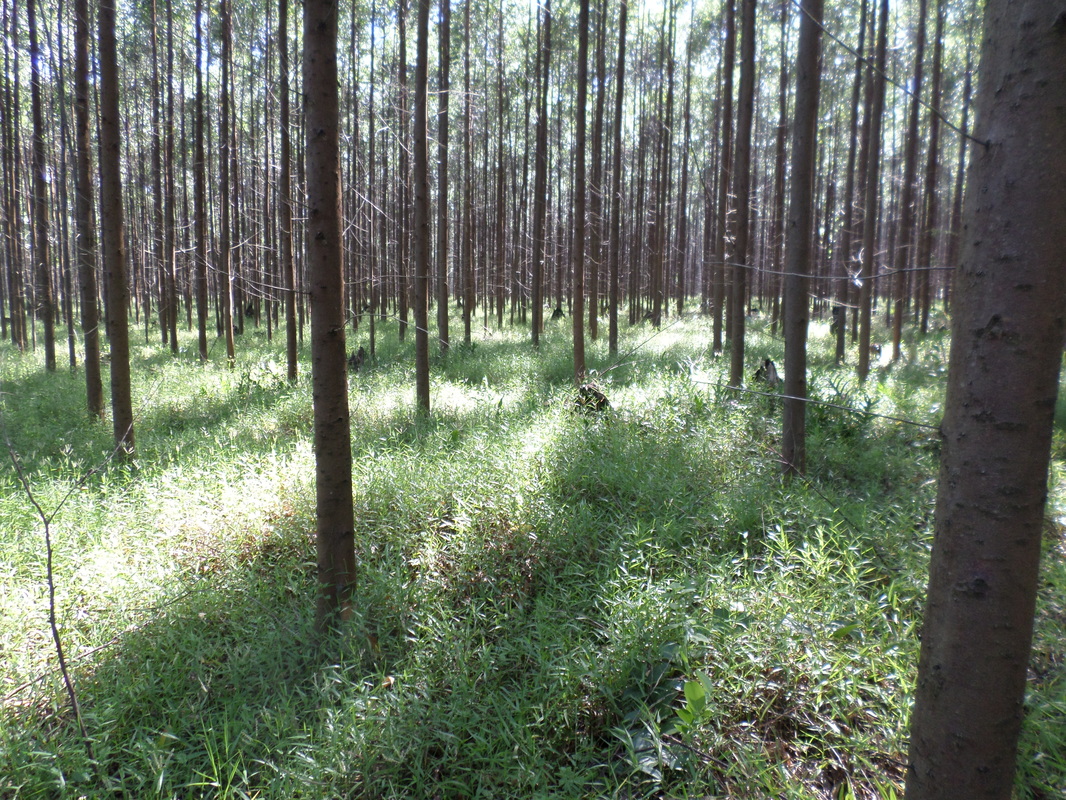The camera pans over a vast, treeless plain, mountains hazy in the distance, suitably stirring music setting the tone. A small child appears, doing childlike stuff. A beat, for the viewer to drink in the awesome scenery, before the words appear: exhorting the viewer to plant trees, with the logo of a well-known charity.
Charity websites proudly display counters with the number of trees planted. They number in the millions. Photos of singing and dancing villagers are shown with their hundred thousandth or their millionth tree. "Deforestation" proclaim the sites "ruins livelihoods and contributes to global warming. We can fix it".
Schoolchildren celebrate arbour day by planting trees in their schoolyard. They are taught from an early age how important trees are to the environment, and how, if we are to save the biosphere, we must plant trees, more trees, millions of trees. These kids are the next generation; when they grow up, they will understand the importance of forests and trees and they will make a difference. They will influence policymakers and set up charities of their own.
All this has some ecologists very, very worried.
Forests around the world are threatened with habitat destruction, and reforestation efforts are a major tool in conservationists' toolbox to restore degraded forest ecosystems. Reforestation efforts are generally intended to provide employment and business opportunities for local communities, restore forest ecosystems, and sequester carbon for carbon credits.
All laudable goals. But what about when forest restoration efforts harm other ecosystems?
That's the question posed by Professor William Bond in a paper in the journal Science. Bond, an ecologist at the University of Cape Town, has studied grasslands, savannas, fire, grazing and biodiversity for decades. And he was deeply concerned by the implications of a new global reforestation initiative.
Bond looked at the recently-announced Atlas of Forest and Landscape Restoration Opportunities, an ambitious and much-needed effort by the World Resources Institute to map degraded forests globally. They have identified 1.5 million square kilometres of land for restoration by 2020, much of which, Bond argued, may, in fact, be natural grassland.
To the frustration of grassland ecologists, grasslands have frequently been overlooked in the international consciousness as places worthy of, well, anything. But grasslands store more than a third of the world's terrestrial carbon stocks (almost all of it underground), and hold a huge proportion of global terrestrial biodiversity, second only to tropical forests. Yet to many people, and particularly policymakers and the public, they are simply tidy places to plant crops or build suburbs. Many natural grasslands are viewed by influential thinkers as "degraded forest", partly because it can often be difficult to tell the difference between ancient grassland and grassland that was once forest.
The question that Prof. Bond asks in his paper is: how much of that 1.5 million square kilometres is, in fact, degraded forest, and how much is ancient natural grasslands?
Charity websites proudly display counters with the number of trees planted. They number in the millions. Photos of singing and dancing villagers are shown with their hundred thousandth or their millionth tree. "Deforestation" proclaim the sites "ruins livelihoods and contributes to global warming. We can fix it".
Schoolchildren celebrate arbour day by planting trees in their schoolyard. They are taught from an early age how important trees are to the environment, and how, if we are to save the biosphere, we must plant trees, more trees, millions of trees. These kids are the next generation; when they grow up, they will understand the importance of forests and trees and they will make a difference. They will influence policymakers and set up charities of their own.
All this has some ecologists very, very worried.
Forests around the world are threatened with habitat destruction, and reforestation efforts are a major tool in conservationists' toolbox to restore degraded forest ecosystems. Reforestation efforts are generally intended to provide employment and business opportunities for local communities, restore forest ecosystems, and sequester carbon for carbon credits.
All laudable goals. But what about when forest restoration efforts harm other ecosystems?
That's the question posed by Professor William Bond in a paper in the journal Science. Bond, an ecologist at the University of Cape Town, has studied grasslands, savannas, fire, grazing and biodiversity for decades. And he was deeply concerned by the implications of a new global reforestation initiative.
Bond looked at the recently-announced Atlas of Forest and Landscape Restoration Opportunities, an ambitious and much-needed effort by the World Resources Institute to map degraded forests globally. They have identified 1.5 million square kilometres of land for restoration by 2020, much of which, Bond argued, may, in fact, be natural grassland.
To the frustration of grassland ecologists, grasslands have frequently been overlooked in the international consciousness as places worthy of, well, anything. But grasslands store more than a third of the world's terrestrial carbon stocks (almost all of it underground), and hold a huge proportion of global terrestrial biodiversity, second only to tropical forests. Yet to many people, and particularly policymakers and the public, they are simply tidy places to plant crops or build suburbs. Many natural grasslands are viewed by influential thinkers as "degraded forest", partly because it can often be difficult to tell the difference between ancient grassland and grassland that was once forest.
The question that Prof. Bond asks in his paper is: how much of that 1.5 million square kilometres is, in fact, degraded forest, and how much is ancient natural grasslands?

 RSS Feed
RSS Feed